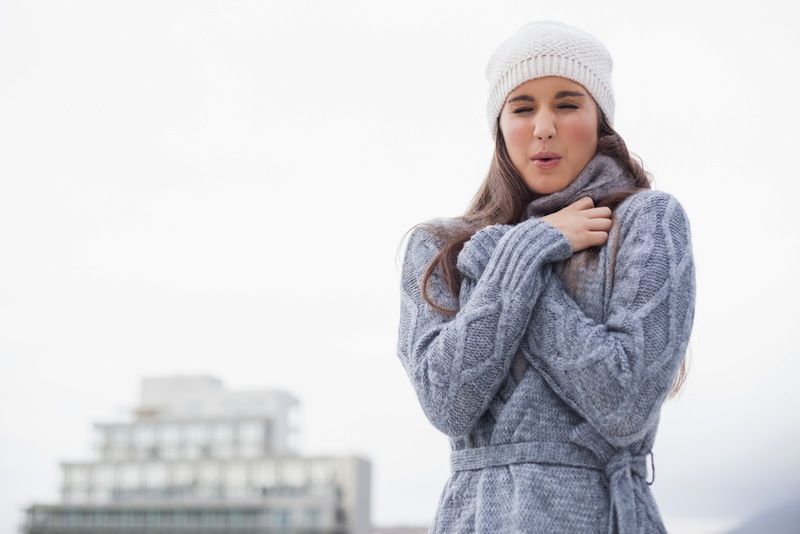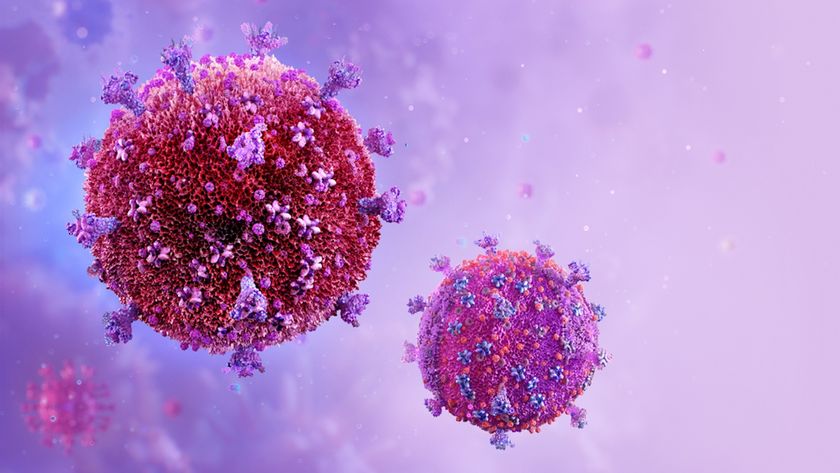
Shivering triggers a response in muscles similar to that of exercise, new research suggests.
The study, published today (Feb. 4) in the journal Cell Metabolism, found that the muscles of shivering people triggers the release of a hormone that activates brown fat, a type of fat that burns energy to generate heat.
If this same response could be activated by a drug, then scientists could one day develop medicines that could amp up energy expenditure, without requiring people to break a sweat — or a shiver, said study co-author Dr. Francesco Celi, an endocrinologist at Virginia Commonwealth University.
Shivering effects
Several studies have shown that people respond to the cold by increasing their energy expenditure, said Celi, who conducted the new research while at the National Institutes of Health. A hormone called irisin seemed critical in the process, but exactly how it was linked to energy expenditure wasn't clear.
To find out, Celi asked seven healthy study participants to ride a bike as hard as they could, and measured their maximum oxygen uptake, or VO2 max. This allowed the researchers to calculate the participants' maximum energy expenditure. The volunteers also spent an hour exercising at 40 percent of their maximal capacity.
After each bout of exercise, the researchers took blood samples and measured levels of several chemicals, including irisin.
Sign up for the Live Science daily newsletter now
Get the world’s most fascinating discoveries delivered straight to your inbox.
It turned out that muscle contractions stimulated the release of irisin. [9 Myths That Can Make You Fat]
Then, the participants spent some time lying in bed. After calculating their energy expenditure, the researchers covered the participants with blankets pumped full of cold water.
Most of the participants started shivering. An hour later, the researchers drew volunteers' blood and measured their circulating hormone levels.
"With shivering, we obtained a similar increase in irisin level as maximum exercise, or one hour of exercise, but the timing was much shorter and the amount of energy expenditure was lower than these two types of exercise," Celi told Live Science.
Brown fat
The team suspected that brown fat, which often is found in hibernating animals but also to some extent in humans, played a role. To find out, they exposed ordinary, white fat cells to irisin in a lab dish. After a while, the irisin stimulated the release of chemicals usually made by brown fat to produce heat.
The findings suggest that both shivering and muscle contraction stimulate the release of this hormone. Irisin then turns on brown fat, and allows it to burn energy to produce heat.
However, it's probably too soon to swap out a jog for sitting in a chilly room, as no studies have shown that shivering on its own can lead to weight loss. (Even exercise, without calorie restriction, doesn't do much to help people shed pounds, Celi said.)
Follow Tia Ghose on Twitter and Google+. Follow Live Science @livescience, Facebook & Google+. Original article on Live Science.

Tia is the managing editor and was previously a senior writer for Live Science. Her work has appeared in Scientific American, Wired.com and other outlets. She holds a master's degree in bioengineering from the University of Washington, a graduate certificate in science writing from UC Santa Cruz and a bachelor's degree in mechanical engineering from the University of Texas at Austin. Tia was part of a team at the Milwaukee Journal Sentinel that published the Empty Cradles series on preterm births, which won multiple awards, including the 2012 Casey Medal for Meritorious Journalism.











